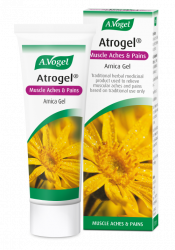6 exercises to strengthen your hip muscles
I’ve discussed in my previous blog why your hip muscles are so important when it comes to supporting your hip joints and reducing joint pain. Now comes the tricky part – what exercises are best when it comes to strengthening these pivotal muscles?
Well I’ve listed 6 different types of exercise below, however it’s important that you consider what is best for YOU.
Every individual is different and the causes of hip pain can vary so it’s essential that you consider what is personally attainable for you and only do what you are able to. Don’t be afraid to adjust an exercise that seems too strenuous - remember that overstressing and over-exercising your body will only make your symptoms worse in the long run!
#1 - Yoga

Yoga is a gentle form of exercise that can work to improve the strength and flexibility of your joints. It’s important, though, that you keep things at a beginner level – don’t go rushing into advanced poses or book yourself into a power yoga class!
Instead focus on slow movements and mild stretches – Hatha yoga is a popular form of yoga that places an emphasis on slow, flowing movements so it may be worthwhile taking a look into this particular type. If you have any doubts, though, it’s always best to consult with your GP first!1
1http://www.everydayhealth.com/hip-pain/yoga-for-hip-pain.aspx
#2 Water aerobics

Swimming is a low impact form of exercise that can help to relieve the pressure on your joints. It’s thought that water aerobics may help to reduce the impact on your joints by up to 75%!2 Be careful though; start with a beginner’s class and always do only what you’re comfortable with – try to avoid over-exercising or pushing your muscles too far!
2 http://www.healthline.com/health/osteoarthritis/hip-exercises-treatment#2
#3 Hip bridges

Hip bridges or ‘bridging’ is a good way of strengthening your glutes and your hamstrings – remember those important hip muscles that I mentioned earlier? It’s also good for toning your thighs but it’s important that you perform this exercise correctly.
Start by lying on your back with your knees bent. Your feet should be flat on the floor at all times and try to keep your hands by your side. When you are ready to begin, lift your pelvis and lower back off the floor.
Try and hold this position for about 5 seconds before lowering your body slowly back down to the ground. Repeat this exercise between 5-10 times depending on your ability.
#4 Hip flexion

As the name may suggest, this exercise is great for strengthening our hip flexors and increasing mobility. Start by lying on your back flat, arms at ease either side of your body and your legs straight.
When you are ready, slowly pull your right knee towards your chest, as close as you possibly can. Keep your other leg straight and hold this position for 10 seconds. Release and do the same with your left knee. You should be aiming to do between 5-10 repeats of this exercise.
#5 Hip abduction
A strengthening exercise for your abductor muscles, this particular movement is good for reducing pain and stabilising your body. Start by holding on to a table or work surface with one hand for support.
Keeping your body straight, extend your leg outwards taking care not to rotate. Aim for a 40 degree angle and hold that position for about 5 seconds before bringing your leg back in slowly. Try to repeat for 5-10 times if possible.
#6 Squats

Ah squats, you’re probably already shrinking away from the screen. This particular exercise is infamous and if you’ve ever encountered the delightful contraption that is a ‘squat machine’ you probably won’t be forgetting it in a hurry.
Squats are good for working your quads, hamstrings and can even help you to maintain mobility and balance. However they may not be suitable for everyone so if your pain is severe or acute, I would recommend giving this one a miss. However, if you are willing to continue make sure to adapt this exercise for your own ability.
Simply stand up straight with your feet about shoulder-width apart. Slowly bend your knees and hips, lowering yourself until your knees obscure your toes or you achieve a 90 degree angle. Hold for a count of 5 and then gently resume your original position. This can be a tough one so again, don’t overdo it and hold on to a table if you need a little extra support! Try to repeat between 5-10 times.
Hip pain exercises to avoid

Exercising is, as we have established, very important if you suffer from hip pain however there are some exercises that should definitely be avoided if you don’t want to upset or irritate your symptoms.
Contact sports: It should go without saying; all contact sports should be firmly off your to-do list! That also includes sports than involve contact with another object like tennis or gold! Not only do these forms of exercise make you vulnerable to further injury, the rigorous movements required can place your hip joint under too much stress. Try and give the footie a miss for now and instead focus on other exercises you can do with your friends such as swimming or yoga!
Running: Running may be good for boosting your cardiovascular health but it can be very strenuous if you have hip pain. The impact can upset your hip joints so instead focus on other forms of exercise. Walking is still a good option for hip pain if you really feel like working out in the great outdoors or you could instead try some strengthening exercises from the comfort of your own home.
Cycling: The repetitive movements of cycling can place a strain on your hip joints, not to mention that it can also affect your posture! If you really must cycle, make sure your bike is professionally fitted and that you properly warm up and stretch your hip flexors before getting on your bike. I’d recommend choosing an alternative though, or at least speaking to your doctor first!
Using heavy weights: Whether you’re a novice weightlifter or a pro, if you suffer from hip pains you should definitely be putting the kettlebell down! Weight-lifting can place too much stress on your body, especially your knees, lower back and hips. You should be focusing instead on gentle strengthening exercises and stretches in order to support your body as it recovers.
Treating hip pain naturally

If you are following a gentle exercise programme it may also be worthwhile examining other areas of your life. There are a variety of ways that you can help your joints naturally – below I’ve listed some simple lifestyle tips and a few of my favourite herbal remedies and treatments!
Have a look at your diet: Inflammation is a huge catalyst for hip joint pain so it’s important that you do as much as possible to eliminate any possible triggers from your life. Refined sugars, caffeine, alcohol and salt – all of these can stimulate an inflammatory reaction within your body which will only accelerate your symptoms.
Instead you should be focusing on getting as many nutrients as possible into your diet, especially vitamin C which is essential for healthy cartilage. Drink plenty of water or even try some ginger or turmeric tea as both spices contain natural anti-inflammatory properties!
RICE: RICE stands for Rest Ice Compression and Elevation. The first thing you should naturally do if you are suffering from joint pain is to rest and not push yourself too hard. As I’ve been emphasising throughout this blog, gentle exercise not ferocious hour long sessions at the gym.
Try applying an ice pack to the area that is causing you pain – this can help to ease any inflammation and dull any unpleasant sensations. You could also try compressing the area by wrapping it with an elastic bandage to relieve any swelling – just make sure you don’t wrap it too tightly!
Finally, try to elevate the sore area. Now in cases of hip pain this can be difficult so I’d recommend simply lying down or elevating your feet ever so slightly. Hopefully this should help to ease your pain and encourage you to relax whilst you are recovering.
Avoid stress: Sometimes the worst thing about pain is the stress it can cause. If you aren’t aching all over you can spend most of your time worrying the pain will return or, if you are already in pain, you can start to stress over how it is impacting your life. You really should try to avoid working yourself into a panic though – it really isn’t doing you any good.
try to avoid working yourself into a panic though – it really isn’t doing you any good.
When your body comes under stress it can stimulate a reaction from your central nervous system, flooding your body with inflammatory chemicals – definitely not what you want if inflammation is the root of your suffering. Instead try to focus on what you can do and make sure you set aside time to rest. Don’t make the mistake of pushing yourself too hard or trying to do too much at once!
Try Atrogel: Atrogel is amazing when it comes to soothing and easing pain, helping to relieve muscle aches, stiffness and bruising. It’s prepared using extracts of fresh arnica flowers and can be applied up to 4 times a day! Suitable for pregnant women and children, simply apply this lovely non-greasy formula to the affected area for some much-needed relief!





 Looking for a treatment to relieve pain in conditions such as muscle aches or pains, stiffness, rheumatic pain or after sporting injuries?
Looking for a treatment to relieve pain in conditions such as muscle aches or pains, stiffness, rheumatic pain or after sporting injuries?

